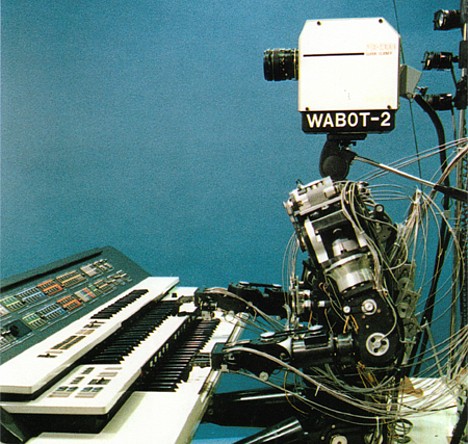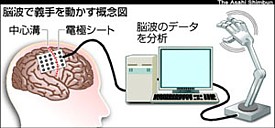 On June 3, engineers at iXs Research Corporation unveiled a robotic teddy bear designed to work as a talking car navigation system. The prototype robot stands 30 centimeters (1 ft) tall and has 6 joints in its arms and neck, which it uses to make gestures while providing spoken directions.
On June 3, engineers at iXs Research Corporation unveiled a robotic teddy bear designed to work as a talking car navigation system. The prototype robot stands 30 centimeters (1 ft) tall and has 6 joints in its arms and neck, which it uses to make gestures while providing spoken directions.
The robot bear is also equipped with functions to improve auto safety, such as an alcohol detection sensor embedded in its neck. If it smells booze, the robot confronts the driver, saying, "You haven't been drinking, have you?" Other sensors detect reckless driving, so if the driver suddenly accelerates or slams on the brakes, the robot says, "Watch out!"
As a bonus feature, the robot bear provides information about nearby landmarks when you stroke its head.
The company hopes to make the robot commercially available next year. "We want to make it more compact," says CEO Fuminori Yamasaki, "and we'd like to offer a variety of shapes, including other characters and a plain mechanical version."
Fujitsu has patented the idea of merging car navigation systems with dolls, but it has granted iXs Research Corporation permission to use the patent through a Kawasaki-area project encouraging major corporations to share intellectual property rights with small-to-medium-sized companies.
[Source: Mainichi]




 On June 3, engineers at
On June 3, engineers at  On May 24, a 17-centimeter tall, 130-gram Panasonic Evolta battery mascot robot scaled a 500-meter cliff at the Grand Canyon in a publicity stunt to showcase the endurance of the Evolta AA alkaline battery, which the Guinness Book of World Records recently recognized as the longest-lasting of its kind. Powered by a pair of Evoltas, the robot hoisted itself up a 530-meter length of rope suspended next to the cliff, reaching the top after a grueling 6 hours and 45 minutes.
On May 24, a 17-centimeter tall, 130-gram Panasonic Evolta battery mascot robot scaled a 500-meter cliff at the Grand Canyon in a publicity stunt to showcase the endurance of the Evolta AA alkaline battery, which the Guinness Book of World Records recently recognized as the longest-lasting of its kind. Powered by a pair of Evoltas, the robot hoisted itself up a 530-meter length of rope suspended next to the cliff, reaching the top after a grueling 6 hours and 45 minutes. 


 Researchers at Osaka University are stepping up efforts to develop robotic body parts controlled by thought, by placing electrode sheets directly on the surface of the brain. Led by Osaka University Medical School neurosurgery professor Toshiki Yoshimine, the research marks Japan's first foray into invasive (i.e. requiring open-skull surgery) brain-machine interface research on human test subjects. The aim of the research is to develop real-time mind-controlled robotic limbs for the disabled, according to an announcement made at an April 16 symposium in Aichi prefecture.
Researchers at Osaka University are stepping up efforts to develop robotic body parts controlled by thought, by placing electrode sheets directly on the surface of the brain. Led by Osaka University Medical School neurosurgery professor Toshiki Yoshimine, the research marks Japan's first foray into invasive (i.e. requiring open-skull surgery) brain-machine interface research on human test subjects. The aim of the research is to develop real-time mind-controlled robotic limbs for the disabled, according to an announcement made at an April 16 symposium in Aichi prefecture. 
